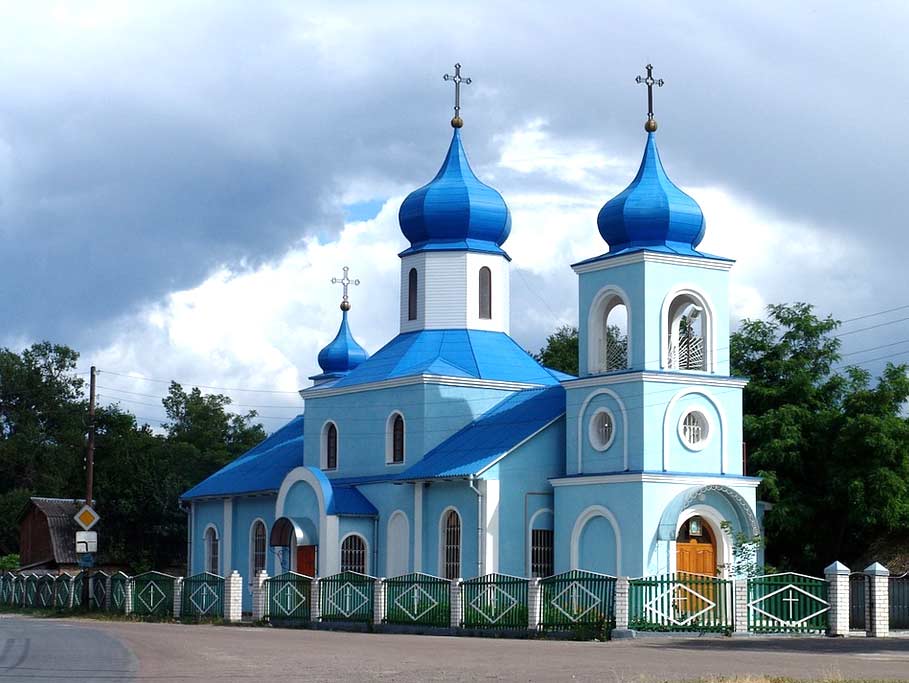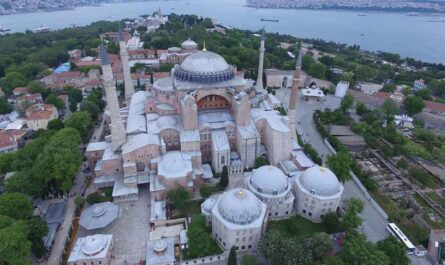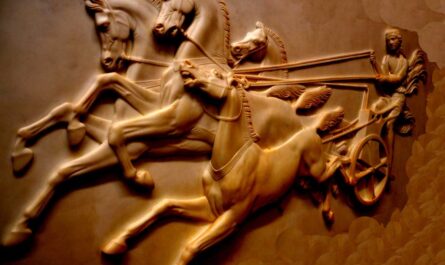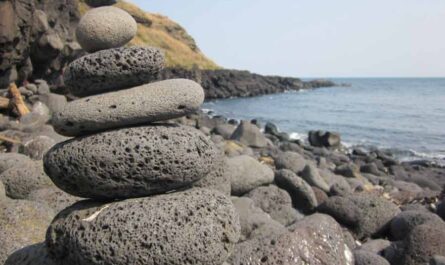There are a lot of interesting facts about Moldova that readers love to learn. Moldova is a nation in Europe’s Balkan area, located in the northeastern quadrant. Chișinău, the country’s capital, is located in the country’s south-central region. This province, formerly known as Bessarabia, was a part of the Romanian principality of Moldavia until 1812, when its suzerain, the Sultan of the Ottoman Empire, gave it to Russia.
Interesting facts about Moldova
Following independence, Moldova underwent significant agricultural reform, leading to the dismantling of state and collective farms, with land redistributed to individuals. However, this transition was fraught with challenges, including widespread displacement, a decline in agricultural production, and allegations of corruption. The abrupt shift in ownership structures disrupted established agricultural practices, exacerbating socio-economic disparities and fueling suspicions of impropriety within the system. Let’s learn some very interesting facts about Moldova!
1. Complexities of Transdniestria Conflict
The economic transition in Moldova was further complicated by the geopolitical quagmire surrounding Transdniestria, a separatist region that declared independence in 1990, precipitating a brief but intense civil conflict. Despite a cease-fire declared in 1992, tensions between Moldova and Transdniestria persisted, with Russian forces maintaining a presence in the region’s security zone. Transdniestria’s strategic significance, particularly its contribution to Moldova’s energy supply, further exacerbated the complexities of the conflict, hindering Moldova’s economic development and impeding efforts toward national reconciliation.
2. Lingering Strains and Regional Dynamics
Decades after the cessation of hostilities, Moldova continues to grapple with the ramifications of the Transdniestrian conflict, with enduring tensions impacting socio-political dynamics and regional stability. The presence of Russian troops in the security zone serves as a constant reminder of the unresolved status of Transdniestria, perpetuating a climate of uncertainty and mistrust. Moldova’s dependence on Transdniestria for energy resources underscores the interdependence between the two entities, complicating efforts towards lasting peace and sustainable development.
3. Moldova’s Arduous Journey to Nationhood
The tumultuous trajectory of Moldova’s post-independence journey reflects the nation’s enduring struggle for sovereignty, stability, and prosperity. From the turbulent early years of nation-building to the ongoing quest for peace and economic resilience in the twenty-first century, Moldova has confronted formidable challenges on its path to nationhood. Despite the myriad obstacles and setbacks encountered along the way, Moldova remains resilient in its pursuit of a cohesive national identity and a brighter future for its citizens. As the nation navigates the complexities of its geopolitical landscape and strives to overcome entrenched divisions, the pursuit of peace and prosperity remains paramount in Moldova’s collective consciousness.
4. Evolution of Name and Linguistic Diversity
Formerly known as Moldavia, the Republic of Moldova emerged as an independent nation following the dissolution of the Soviet Union, adopting its current name to signify a new chapter in its history. Moldova boasts a rich linguistic tapestry, with Romanian serving as the official language and Gagauz, Russian, and Ukrainian recognized as regional languages, reflecting the nation’s cultural diversity and historical heritage. This linguistic mosaic underscores Moldova’s status as a melting pot of cultural influences, where linguistic plurality serves as a testament to the nation’s vibrant identity and complex historical trajectory.
5. Symbolism of Moldovan Flag and National Emblem
Moldova’s national flag is emblematic of the nation’s rich symbolism and historical legacy. Featuring a tricolor design of blue, yellow, and red, the flag bears a striking emblem consisting of an eagle clutching a shield adorned with aurochs, symbolizing strength, resilience, and national pride. This iconic imagery encapsulates Moldova’s aspirations for unity, sovereignty, and prosperity, serving as a poignant reminder of the nation’s journey toward statehood and independence.
6. Enigmatic Landscape: The 100 Hills
Nestled along the border of the Padurea Domneasca Reserve, near the picturesque Prut River, lies a haunting expanse of land known as the 100 Hills. Stretching over an 8-kilometer length between the settlements of Braniste and Avrameni, these undulating mounds present a mesmerizing spectacle, seemingly sculpted by the hand of nature itself. Despite their natural origins, the hills’ symmetrical arrangement and alignment with the surrounding meadows evoke an eerie sense of artifice, prompting observers to ponder their enigmatic origins. Whether shrouded in myth or rooted in geological phenomena, the 100 Hills stand as a testament to the timeless allure of Moldova’s landscapes, inviting contemplation and exploration amidst the beauty of the natural world.
7. Challenges in Law Enforcement and Transportation
Moldova grapples with significant challenges in law enforcement, as victims often evade justice due to ineffective surveillance mechanisms. Moreover, the country’s transportation system suffers from insufficiencies, hindering mobility and exacerbating logistical constraints. However, initiatives such as Emma Sophia Maclennan’s Eastern Alliance for Safe and Sustainable Transport (EASST) have garnered recognition for their contributions to road safety, offering hope for improved transportation infrastructure and enhanced safety measures in Moldova.
8. Musical Heritage and Cultural Influences
Moldovans have a deep-seated appreciation for music and dance, with their cultural expressions heavily influenced by Romanian traditions. Moldovan music, characterized by vibrant melodies and rhythmic harmonies, mirrors the linguistic and cultural ties with Romania. Among the beloved classics is “Mioriţa,” a renowned Romanian ballad depicting pastoral life and the bond between a shepherd and his flock. So revered is this ballad that the first two verses are immortalized on Moldova’s banknotes, underscoring its cultural significance and enduring resonance among the Moldovan populace.
9. Sporting Achievements: Nicolae Birliba’s Feats
Nicolae Birliba stands as a testament to Moldova’s sporting prowess, having achieved remarkable success as a weightlifting champion. With an impressive nine world championship titles to his name, Birliba’s prowess in the sport is unparalleled. In a remarkable display of strength and endurance, he astounded audiences by lifting a 16kg kettlebell an astonishing 2,575 times at the age of 49 in 2011. His remarkable achievements not only showcase Moldova’s sporting talent but also serve as an inspiration to aspiring athletes worldwide. Witnessing Birliba’s feats in action is a testament to the indomitable spirit and dedication that define Moldova’s sporting legacy.
10. Longevity and Support for Sustainable Development
Despite facing challenges in its healthcare system, Moldova boasts a remarkable life expectancy, surpassing that of several of the Commonwealth of Independent States’ (CIS) better-performing countries by two to five years. This surprising longevity underscores the resilience and adaptability of Moldova’s population, despite the shortcomings in healthcare infrastructure. The United Nations has played a pivotal role in supporting Moldova’s efforts towards achieving Sustainable Development Goals (SDGs), recognizing the importance of addressing healthcare disparities and promoting holistic development initiatives within the country.
11. Emphasis on Education Reform
Recognizing the pivotal role of education in fostering socio-economic development and equitable opportunity, the Moldovan government has prioritized the establishment of a robust educational system aimed at addressing the needs of its populace. Through strategic guidelines and policy initiatives, Moldova has endeavored to bridge educational disparities and promote inclusivity across various levels of learning. This comprehensive approach encompasses pre-school and compulsory education programs, as well as vocational and technical training, aimed at empowering individuals with the skills and knowledge necessary for personal and professional growth. By investing in education reform, Moldova seeks to nurture a skilled workforce and cultivate a culture of lifelong learning, thereby fostering sustainable development and societal progress.

12. Rich Archaeological Heritage
Moldova’s storied past is steeped in a rich tapestry of archaeological treasures, bearing testament to its long and illustrious history. Archaeological sites scattered across the country have yielded ancient implements dating back an astonishing 1.2 million years, shedding light on the region’s prehistoric inhabitants and their cultural evolution. Notable discoveries, including flint relics and artifacts from the Paleolithic and Neolithic eras, have been meticulously curated and added to the national collection of archaeological treasures. From intricate jewelry and finely crafted weaponry to essential cooking utensils, these artifacts offer invaluable insights into Moldova’s ancient civilizations and their enduring legacies, enriching our understanding of the country’s cultural heritage and historical significance.
13. Environmental Legacy of Industrial Expansion
Moldova’s environmental landscape bears the scars of industrial expansion and lax emission regulation during the Soviet era, resulting in widespread ecological degradation. The unchecked proliferation of industrial activities led to the poisoning of land and water resources, posing significant threats to human health and biodiversity. Despite efforts to mitigate environmental damage in recent years, the legacy of pollution continues to haunt the landlocked country, underscoring the urgent need for sustainable development practices and stringent environmental regulations.
14. Energy Dependency and Financial Obligations
Moldova’s reliance on Russia and Ukraine for energy resources underscores its vulnerability to external dependencies and geopolitical pressures. This dependence necessitates financial transactions with energy suppliers such as Gazprom, further exacerbating Moldova’s economic challenges and fiscal burdens. The need to secure energy resources from external sources underscores the imperative for Moldova to diversify its energy portfolio and explore alternative sources of energy generation, thereby reducing its susceptibility to external influences and ensuring energy security for its populace.
15. Celebration of Viticulture: National Wine Day
Every October 3-4, Moldovan winemakers open their homes and vineyards to the public, inviting locals and tourists alike to partake in the festivities of National Wine Day. This nationwide celebration pays homage to the rich heritage of winemaking in Moldova, offering wine enthusiasts the opportunity to indulge in inexpensive wine tastings and explore the diverse array of local vintages. Shuttle buses ferry attendees between wineries, facilitating a seamless and enjoyable experience for all participants as they immerse themselves in the cultural and culinary delights of Moldova’s vibrant wine industry.
16. Ecological Diversity and Natural Reserves
Moldova boasts a diverse array of natural reserves, each teeming with ecological richness and biodiversity. Codru, Lower Prut, Plaiul Fagului, Lagorlic, and Padurea Domneasca are among the country’s reserves, encompassing vast expanses of pristine wilderness and protected habitats. These reserves serve as vital sanctuaries for indigenous flora and fauna, preserving the ecological balance and cultural heritage of the region. From verdant forests to meandering rivers, Moldova’s natural reserves offer visitors a glimpse into the country’s untamed beauty and environmental splendor, underscoring the importance of conservation efforts in safeguarding our planet’s precious resources for future generations.
17. Challenges in Safety and Security
While Moldova offers rich cultural experiences and natural beauty, visitors should be aware of potential safety concerns. Petty theft, ATM fraud, pickpocketing, verbal abuse, and even instances of police harassment are unfortunate possibilities in the country. Travelers are advised to remain vigilant and take precautions to safeguard their belongings and personal safety while exploring Moldova’s attractions.
18. Saharna Monastery: A Pilgrimage Destination
Nestled amidst rugged hills and dense forests in northeastern Moldova, Saharna Monastery beckons pilgrims and travelers alike with its serene beauty and spiritual ambiance. While not on the same scale as renowned pilgrimage sites like Lourdes, Saharna Monastery holds a special place in the hearts of those seeking solace and spiritual renewal. Its picturesque setting and tranquil surroundings make it a cherished destination for those embarking on a journey of faith and contemplation.
19. Mămăligă: The National Dish
Mămăligă reigns supreme as Moldova’s quintessential national dish, a hearty porridge made from yellow maize flour that graces dinner tables across the country. This humble yet beloved dish is often adorned with toppings such as cottage cheese, sour cream, or savory pig rind, adding layers of flavor and texture to each comforting bite. Whether served as a standalone meal or as an accompaniment to stews and meat dishes, mămăligă embodies the essence of Moldovan cuisine, offering a taste of tradition and culinary heritage to locals and visitors alike.
20. Orheiul Vechi: A Timeless Monument
Orheiul Vechi stands as a testament to Moldova’s rich historical legacy, offering a glimpse into the country’s ancient past. This sprawling open-air monastery complex, dating back over 2,000 years, is revered as Moldova’s most significant historical landmark, captivating visitors with its majestic ruins and timeless allure. Amidst the crumbling remains of ancient castles, spas, and monasteries, travelers are transported back in time to an era of grandeur and spiritual devotion. Despite its deteriorating state, Orheiul Vechi exudes an undeniable beauty and mystique, beckoning adventurers to explore its hidden treasures and bask in its serene ambiance.
21. Linguistic Diversity
Moldova boasts a diverse linguistic landscape, with the majority of its populace being bilingual or trilingual. Moldovans are proficient in one of three primary languages: Romanian, Russian, or Gagauz, reflecting the country’s rich cultural tapestry and historical heritage. Many individuals possess the remarkable ability to communicate fluently in multiple languages, fostering a spirit of inclusivity and linguistic harmony within Moldovan society.
22. Strong Drinks Museum: A Spirited Attraction
In the quaint village of Tirnauca, visitors will discover the whimsical Strong Drinks Museum, housed within a distinctive bottle-shaped building that is sure to pique curiosity. Towering at 28 meters high, this unconventional museum is dedicated to celebrating the art and history of potent beverages. Inside, visitors can explore exhibits showcasing a diverse array of alcoholic concoctions, from traditional spirits to regional specialties, offering a fascinating glimpse into Moldova’s spirited heritage. The Strong Drinks Museum promises an immersive and intoxicating experience for enthusiasts and curious travelers alike, blending cultural insight with spirited indulgence in a truly unique setting. How AI, ChatGPT maximizes earnings of many people in minutes
23. Health Challenges and Public Health Statistics
Moldova, Europe’s second poorest country, grapples with significant health challenges, including a high death rate attributed to cancer and intestinal disorders. Smoking and alcohol consumption contribute to the country’s health burden, with alarming fatality rates among both men and women. Men face a fatality rate of 57.6% from smoking and 18.8% from alcohol use, while women experience rates of 62.3% and 13.7%, respectively. These sobering statistics underscore the urgent need for comprehensive public health interventions to address the root causes of preventable diseases and promote healthier lifestyles among Moldova’s population.
Hopefully, you have enjoyed these interesting facts about Moldova!
More Interesting Facts and Articles
- 60 Interesting Facts about Kathmandu City Nepal
- 30 Interesting Facts About the Flag Of Scotland
- 15 Interesting Fun Facts – Everland Theme Park, South Korea
- 75 Awesome Washington DC USA Interesting Fun Facts
- 70 Archipelago Ibiza Spain Interesting Fun Facts Trivia
- 33 Gyeongbokgung Palace South Korea Interesting Fun Facts
- 29 Andaman and Nicobar Islands Interesting Fun Facts
- 40 Irish Saint Patrick’s Day Interesting Fun Facts
- 25 Interesting Fun Facts About Nami Island South Korea
- 89 Wonders of the World One Must See in Lifetime
- Cultural Wonders of the World – A Complete List
- 22 Pashupatinath Temple Nepal Interesting Fun Facts
- List of 54 Greatest Empires in Entire History Timeline
- 100 United Nations Facts – The UN Basic Facts for All
- 100 Plateau of Tibet Facts to Astonish You
- 200 Kazakhstan Fun Facts Everyone Should Know
- 125 Interesting Facts about Hungary You Must Enjoy
- 200 Interesting Facts about Poland for Travelers
- 200 Cool Facts about Germany to Surprise You



